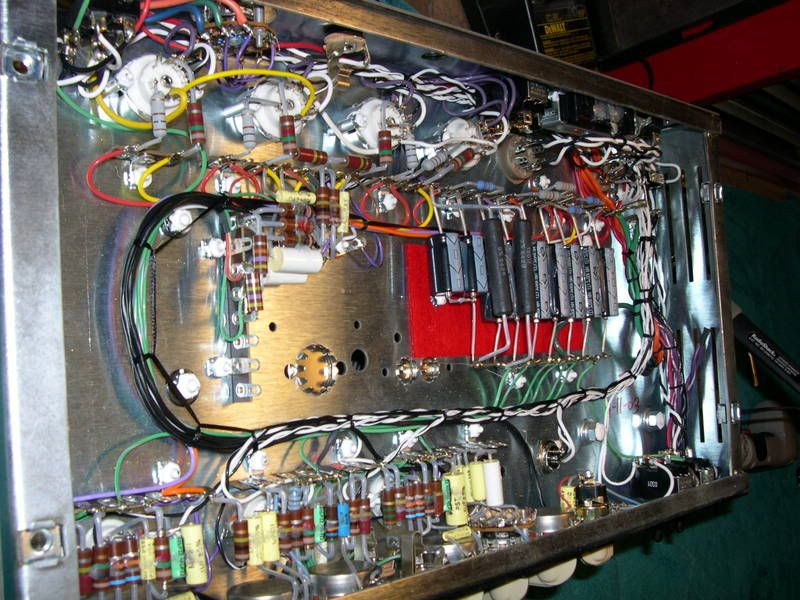I figured I'd raise the topic of amplifier complexity of tone, because I think it's one of many important factors that distinguishes a great amp from an ordinary sounding amp. If you go on amp forums you often come across the concept, and it's rarely precisely defined.
But here's why it's important: if you run your guitar through a hi fi system, or a mixing console direct, you get only the pure sound of the guitar. While this can be useful, it's also not a very complex tone. It's not a very interesting tone either, IMHO.
What's missing are the overtones, harmonics, and other distortions of the signal that are inherent in a great amp. Not only that, these euphoric artifacts are there even with a clean signal, if you have a great amp.
Some amp designers do a better job than others with these colorations.
Then there is the question of whether the amp brings out that elusive "3D" image. Some amps seem to project a flatter image that kind of lays there, and is less exciting to the ear/brain.
What I love about my HXDA and DG30 are their ability to project a beautiful 3D tone with lots of harmonic color, clean or overdriven. This is what separates them from the also-rans. I haven't found very many amps I'd put in this category, except a few classic old amps, and a few expensive boutique amps.
For some reason, I think hand wiring helps, though I've played a few circuit board amps that also sound great.
Anyway, I thought it might be fun to throw the topic out there and let everyone comment.
But here's why it's important: if you run your guitar through a hi fi system, or a mixing console direct, you get only the pure sound of the guitar. While this can be useful, it's also not a very complex tone. It's not a very interesting tone either, IMHO.
What's missing are the overtones, harmonics, and other distortions of the signal that are inherent in a great amp. Not only that, these euphoric artifacts are there even with a clean signal, if you have a great amp.
Some amp designers do a better job than others with these colorations.
Then there is the question of whether the amp brings out that elusive "3D" image. Some amps seem to project a flatter image that kind of lays there, and is less exciting to the ear/brain.
What I love about my HXDA and DG30 are their ability to project a beautiful 3D tone with lots of harmonic color, clean or overdriven. This is what separates them from the also-rans. I haven't found very many amps I'd put in this category, except a few classic old amps, and a few expensive boutique amps.
For some reason, I think hand wiring helps, though I've played a few circuit board amps that also sound great.
Anyway, I thought it might be fun to throw the topic out there and let everyone comment.



